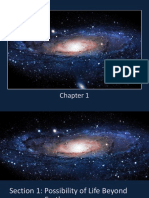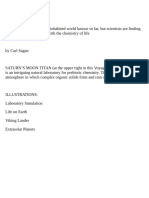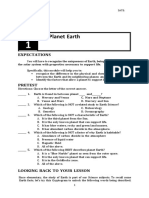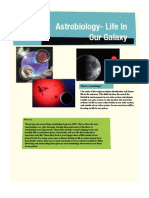•SCIENCE
Part I: Multiple Choices
1. A
2. B
3. D
4. A
5. B
6. A
7. D
8. A
9. B
10. D
Part II: Essay
*A special planet: the habitable Earth
It is the right distance from the Sun, it is protected from
harmful solar radiation by its magnetic field, it is kept warm
by an insulating atmosphere, and it has the right chemical
ingredients for life, including water and carbon.
Part III: Reflection Question
*Yes there’s a possibility that there is some living things outside our planet that we don’t know.
Just like some micro-organism or some species that we still don’t know that it exist. According
to, NASA's Nancy Grace Roman Space Telescope or the Wide-Field Infrared
Survey Telescope, could zero in on a distant planet’s reflected light to detect the
signatures of oxygen, water vapor, or some other powerful indication of possible
life. But unless we get lucky, the search for signs of life could take decades.
Discovering another blue-white marble hidden in the star field, like a sand grain
on the beach, will probably require an even larger imaging telescope. Designs are
already underway for that next-generation planet finder, to be sent aloft in the
2030s or 2040s. MIT physics professor Sara Seager looks for possible chemical
combinations that could signal the presence of alien life. She and her
biochemistry colleagues first focused on the six main elements associated with
life on Earth: carbon, nitrogen, oxygen, phosphorous, sulfur and hydrogen.
Yet Earth remains a standout, and so far, one of a kind. Of the thousands of
exoplanets – planets around other stars – confirmed by our increasingly
�powerful telescopes, and despite extensive probing of the solar system, ours
is still the only planet known to host life.


























































